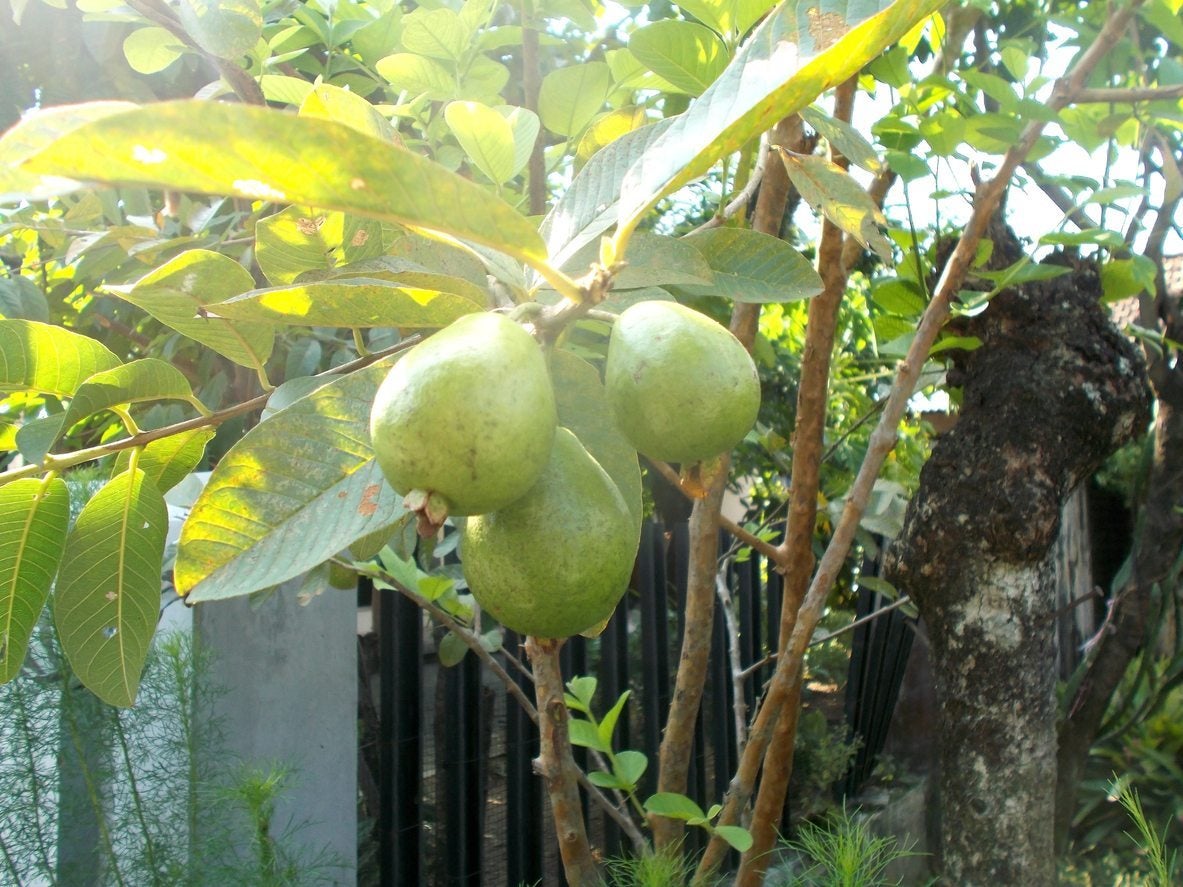Guava Tree Fruiting: When Will My Guava Bear Fruit

Guava is a small tree indigenous to the American tropics that has become naturalized in most tropical and subtropical climates of the world. It can be found in Hawaii, the Virgin Islands, Florida, and a few sheltered areas of California and Texas. Although the trees are frost tender, adult trees may survive short periods of frost, but they can be grown in a greenhouse or sunroom in other regions. If you are lucky enough to have a guava, you may be wondering “when will my guava bear fruit?”
When Will My Guava Bear Fruit?
Guava trees grow up to 26 feet (8 m.) in height. Cultivated trees are pruned back to 6 to 9 (2-3 m.) tall. If a tree has not been pruned, it usually flowers in fall. If the tree has been pruned, the tree will blossom 10 to 12 weeks after pruning with white, 1 inch (2.5 cm.) flowers. The blossoms yield small, round, oval or pear-shaped fruits, or more accurately, berries. So, whether or not your tree has been pruned decides when it blooms and when the guava tree begins fruiting. The period of time between flowering and ripening of the fruit is 20 to 28 weeks, depending on when the tree was pruned. Pruning isn’t the only factor which determines when guava trees fruit, however. Guava tree fruiting is dependent on the age of the tree as well. So how long until guava trees produce fruit?
How Long Until Guava Trees Produce Fruit?
When guava trees fruit depends on not only the age of the plant, but also how the plant was propagated. While a guava can be grown from seed, it will not be true to the parent and may take up to eight years to produce fruit. Trees are more commonly propagated via cuttings and layering. In this case, guava tree fruiting should occur when the tree is three or four years of age. Trees may produce anywhere from 50 to 80 pounds (23-36 kg.) of fruit per tree per year. The largest fruit will be produced off vigorous shoots of two or three years of age. In some areas, guava produces two crops per year, a larger crop in the summer followed by a smaller crop in the early spring. Simple pruning techniques will enable the gardener to induce fruiting in the guava year-round.
Gardening tips, videos, info and more delivered right to your inbox!
Sign up for the Gardening Know How newsletter today and receive a free copy of our e-book "How to Grow Delicious Tomatoes".

Amy Grant has been gardening for 30 years and writing for 15. A professional chef and caterer, Amy's area of expertise is culinary gardening.
-
 4 Superfast Composting Methods: Turn Waste Into Garden Gold In 30 Days Or Less
4 Superfast Composting Methods: Turn Waste Into Garden Gold In 30 Days Or LessTry the fastest composting methods to turbocharge your pile and transform kitchen scraps and garden waste into finished compost in just a few weeks.
By Mary Ellen Ellis
-
 Best Spider Plant Soil – Complete Soil Guide And Expert Tips For Keeping Plants Happy
Best Spider Plant Soil – Complete Soil Guide And Expert Tips For Keeping Plants HappySpider plants are fun and easy plants to grow, but what is the best soil for a spider plant? Selecting the right soil is important so they can thrive.
By Bonnie L. Grant